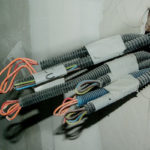Improve Your Business Surveillance System
Video surveillance is a great asset for businesses, keeping properties, inventory, and employees safe. Should anything happen, security cameras provide video footage and evidence to help capture suspects. And while your surveillance systems are meant to secure your business, you must also protect and maintain your system to ensure optimal performance. Here are some smart business surveillance tips.
Secure Your Surveillance System From Hackers
Many business surveillance systems utilize IP security cameras, which require Internet connection to allow you to view your feed remotely. Unfortunately, this makes IP surveillance systems susceptible to hackers. Thankfully, there are ways to keep them at bay:
- Change your system password every three months and practice proper password management.
- Never keep default usernames and passwords. These can easily be found online, thus, leaving them in place gives hackers free admission to your system.
- Secure your business network – an unsecure network risks leaving open access points in your system, giving hackers the opportunity to access your surveillance cameras.
- Never connect your cameras to a public network. Hackers can easily access information (like video credentials) through shared networks.
- Choose cameras with encrypted signals – encryption disguises information sent over the internet, making it challenging for hackers to identify valuable data.
Avoid Video Surveillance Legal Liabilities
As long as you inform employees and customers that they are being recorded, as well as refrain from monitoring areas with a reasonable expectation of privacy, your security system should be free from legal liabilities. Here are the areas where people have a reasonable expectation of privacy:
- Bathrooms
- Dressing rooms
- Exam rooms
- Locker rooms
- Hotel rooms
Remember, the laws vary from state to state. Be sure you fully understand the laws regarding video surveillance, do not invade customer and employee privacy, and review the camera privacy laws in your state.
Strategically Place Cameras
Security cameras locations are crucial for complying with laws, as well as the effectiveness of your system. Be sure your camera locations meet these requirements:
- Install cameras in sensible areas, such as offices, stockrooms, behind cash registers, above entrances and exits.
- Place security cameras under sufficient lighting to provide clear quality images.
- Position cameras to capture wide angles for fuller surveillance coverage.
Store Video Footage In The Cloud
Cloud storage solutions offer excellent benefits and are a great alternative to traditional analog systems. You may consider employing cloud solutions as they are:
- Cost-effective – Cloud storage eliminates the need for onsite digital video recorders (DVR) or network video recorders (NVR).
- Accessible – When your data is stored in the cloud, it can be viewed remotely via smartphone, tablet, or desktop web browser any time.
- Flexible – New users, locations, and cameras can be easily added to your existing infrastructure without rewiring.
Increase Business Security With Additional Camera Features
Additional features can help to enhance your surveillance system overall. Some additional benefits include:
- Adjustable Angles – PTZ cameras can pan, tilt and zoom and cameras that are mobile allow for multiple views.
- Artificial Intelligence (AI) Technology – Security cameras hosted on monitoring platforms powered by AI alert users about important or unusual events.
- Day/Night Capabilities -Night vision cameras utilize infrared LEDs and are helpful for those who need around the clock surveillance.
- High Resolution – These cameras provide the best quality images.
- IP-based vs. Wired – No video cables are required for IP systems.
- Weatherproof – Weatherproof cameras and housing are built to withstand outdoor conditions to extend performance.
- Remote Access – With the mobile app, you can use your smartphone to view footage and remotely control your system.
We offer a wide variety of affordable security cameras and surveillance systems – browse our stock online at SecurityCamExpert.com or call 888-203-6294 to speak with one of our experts. You may also connect with us on Facebook, Twitter, LinkedIn, and Pinterest.

